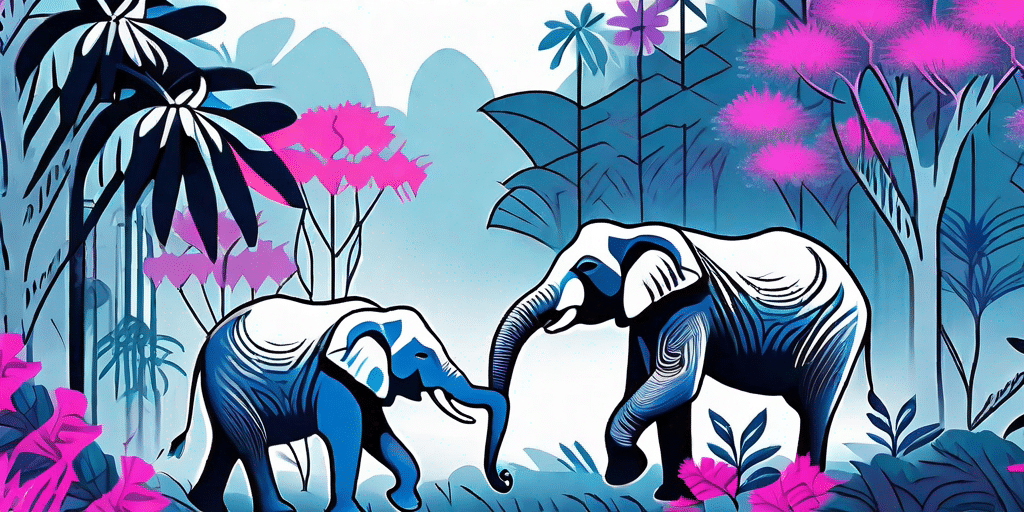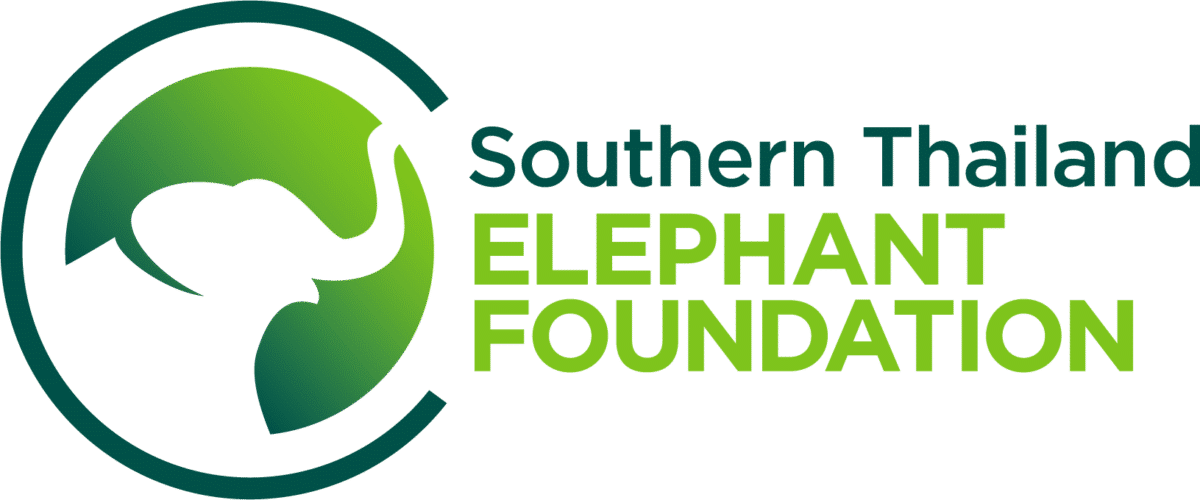The History of Elephants in Thailand
Elephants have played a significant role in the cultural and historical tapestry of Thailand, shaping the nation’s identity and leaving an indelible mark on its heritage. From ancient times to the modern era, these majestic creatures have not only been admired for their sheer size and strength but have also held deep spiritual and symbolic importance. Let’s delve into the captivating history and journey of elephants in Thailand.

Understanding the significance of elephants in Thai culture
Thailand, a country known for its rich cultural heritage, has long been hailed as the “Land of the White Elephant.” The majestic creature, with its immense size and gentle demeanour, holds a special place in the hearts of the Thai people. Elephants in Thai culture symbolise power, wisdom, and good fortune, embodying qualities that are deeply cherished by the locals.
Throughout history, elephants have played a central role in Thai folklore, religion, and daily life. These magnificent beings are revered as sacred creatures, believed to possess divine qualities. In Thai belief systems, elephants are associated with the Hindu god Indra, serving as his celestial steeds. Their presence in religious art is widespread, with intricate statues adorning temples and households, acting as talismans that bring blessings to those who possess them.
The spiritual and symbolic importance of elephants
The spiritual and symbolic importance of elephants in Thai culture cannot be overstated. These gentle giants are seen as guardians, protectors, and symbols of strength. Their immense size and unwavering loyalty make them a fitting representation of qualities that Thai people hold dear. Elephants are believed to bring good fortune and prosperity to those who revere them, and their presence is considered auspicious in various ceremonies and rituals.
Elephants in Thai literature and art
Thai literature and art have been greatly enriched by the presence of elephants. Ancient texts, such as the Ramakien and Jataka tales, frequently feature these magnificent creatures as wise advisors, brave warriors, and heroic protectors. The stories depict the deep bond between humans and elephants, highlighting their intelligence and compassion.
Thai artists have skillfully captured the essence of elephants in their paintings and carvings. These exquisite artworks can be found in temples, palaces, and museums throughout Thailand, showcasing the profound influence of elephants on the country’s artistic expression. The intricate details and vibrant colours used in these creations bring the elephants to life, evoking a sense of awe and admiration.
Elephants have also been a source of inspiration for Thai dancers and performers. Traditional dances often incorporate graceful movements that mimic the majestic gait of elephants, paying homage to their significance in Thai culture. These performances serve as a reminder of the deep-rooted connection between humans and elephants, celebrating their role as cultural icons.
Furthermore, elephants have played a practical role in Thai society for centuries. In the past, they were used as working animals, assisting with heavy labour and transportation. Their strength and intelligence made them invaluable in various industries, such as logging and agriculture. Although their role has evolved, elephants continue to be revered and respected for their historical contributions.
In conclusion, elephants hold a special place in Thai culture, representing power, wisdom, and good fortune. Their spiritual and symbolic importance is deeply ingrained in Thai belief systems, literature, art, and daily life. As Thailand continues to embrace its cultural heritage, the significance of elephants remains a cherished aspect of the country’s identity.
The ancient relationship between elephants and Thailand
For centuries, elephants held a vital role in Thai society, serving both practical and ceremonial purposes. They were instrumental in warfare, royal processions, and performing arduous labour tasks. Let’s explore the multifaceted connections between elephants and ancient Thailand.
Thailand’s deep-rooted relationship with elephants dates back to ancient times when these majestic creatures were not only revered but also played a significant role in shaping the country’s history and culture. The bond between elephants and the Thai people was so profound that it permeated every aspect of their lives.
Elephants in warfare and royal processions
Elephants played a strategic role in battles, carrying troops and intimidating the enemy. These colossal creatures, with their sheer size and strength, instilled fear in the hearts of adversaries. Thai warriors rode atop these majestic beasts, their presence commanding respect and admiration. The sight of a king, adorned with regal ensembles, atop an elephant during ceremonial processions was a spectacle that left the onlookers in awe. It symbolised power, authority, and the divine connection between the ruler and the animal kingdom.
These grand processions were not only a display of opulence but also served as a means to unite the Thai people under a common identity. The rhythmic sound of drums, the vibrant colours of traditional costumes, and the regal elephants parading through the streets created a sense of unity and pride among the spectators. It was a visual representation of the kingdom’s strength and prosperity.
The role of elephants in labour and transportation
Before the arrival of modern machinery, elephants were invaluable for heavy labour and transportation. Their immense strength and remarkable intelligence made them ideal for tasks that required precision and endurance. The Thai people recognized the exceptional abilities of these gentle giants and harnessed their power to accomplish monumental feats.
In the dense jungles of Thailand, elephants were indispensable in the logging industry. Their ability to navigate treacherous terrains and carry heavy logs made them the perfect partners for timber extraction. With their trunks wrapped around the massive trunks of trees, they effortlessly manoeuvred through the dense foliage, leaving a trail of cleared land in their wake.
Furthermore, elephants were instrumental in the construction of grand temples and palaces that still stand as testaments to Thailand’s rich architectural heritage. These magnificent creatures transported colossal stones, delicately placing them in precise locations, contributing to the creation of awe-inspiring structures that have withstood the test of time.
The relationship between elephants and the Thai people extended beyond their practical uses. These gentle giants were revered as sacred beings, believed to possess spiritual qualities. They were treated with utmost care, receiving royal patronage and dedicated mahouts who formed deep bonds with them. The mahouts, often considered the guardians of elephants, developed a profound understanding of their behaviour and needs, ensuring their well-being.
In conclusion, the ancient relationship between elephants and Thailand is a testament to the deep-rooted connection between humans and animals. Elephants played a vital role in Thai society, serving as symbols of power, contributors to labour and transportation, and objects of reverence. Their presence in warfare, royal processions, and labour tasks shaped the country’s history and culture, leaving an indelible mark on the hearts and minds of the Thai people.
The transition to modern times
The advent of industrialisation and societal changes brought a shift in the role of elephants in Thailand. The once necessary presence of elephants for labour and transportation diminished, posing new challenges and opportunities for their future.
The impact of industrialisation on elephants
As Thailand embraced industrialisation, traditional practices involving elephants dwindled. The demand for timber declined, and machinery replaced elephants in many labour-intensive industries. This shift left a void in the lives of elephants, and their presence in society faced uncertainty.
The shift from labour to tourism
Although elephants were no longer as prevalent in the labour force, they found a new vocation within Thailand’s burgeoning tourism industry. Tourists worldwide were captivated by the charm and grace of these gentle giants, creating a demand for elephant experiences. Riding elephants, watching them paint, and witnessing their intelligence in action became popular attractions.
Current status of elephants in Thailand
While elephants continue to be celebrated and adored in Thailand, their situation is not without challenges. The tourism industry, which initially brought hope for their preservation, has presented new threats to their well-being. Let’s explore the current landscape and the efforts to safeguard their future.
The plight of elephants in the tourism industry
Although the tourism industry provides employment opportunities and generates income, it has also given rise to unethical practices and mistreatment of elephants. Captive elephant management, including unjust working conditions and invasive performances, has become a cause for concern. Awareness campaigns and responsible tourism initiatives aim to address these issues and ensure the welfare of these magnificent creatures.
Conservation efforts and elephant sanctuaries
Organisations and individuals are actively striving to protect elephants and provide ethical alternatives for elephant interactions. Elephant sanctuaries have emerged, prioritising the well-being and freedom of these creatures. By promoting observation rather than exploitation, these sanctuaries educate visitors about conservation efforts and the importance of preserving Thailand’s natural heritage.
The future of elephants in Thailand
The conservation of elephants in Thailand depends on a multifaceted approach, encompassing legislation, policies, and education. Preserving the heritage and welfare of these majestic animals requires a commitment from both locals and visitors alike.
Legislation and policies for elephant protection
Thailand has implemented legislation to address concerns surrounding elephant welfare. Stricter regulations and guidelines aim to enforce ethical treatment and prevent the illegal trade of elephants. Effective implementation of these laws and ongoing monitoring are crucial in safeguarding the future of these iconic creatures.
The role of education in preserving Thailand’s elephant heritage
Education plays a vital role in fostering a deeper understanding and appreciation for the cultural and ecological significance of elephants. By raising awareness among locals and tourists about responsible elephant tourism, conservation efforts, and the need for sustainable practices, we can ensure the survival and thriving future of these majestic creatures in Thailand.
In conclusion
Elevated to the status of cultural icons, elephants have shaped the history, art, and national identity of Thailand for centuries. Despite the challenges posed by societal changes, elephants continue to hold a special place in the hearts of Thai people. The future of elephants in Thailand relies on a collective commitment to conservation, education, and responsible tourism. By respecting and protecting these magnificent creatures, we can ensure that their legacy and significance endure for generations to come.

